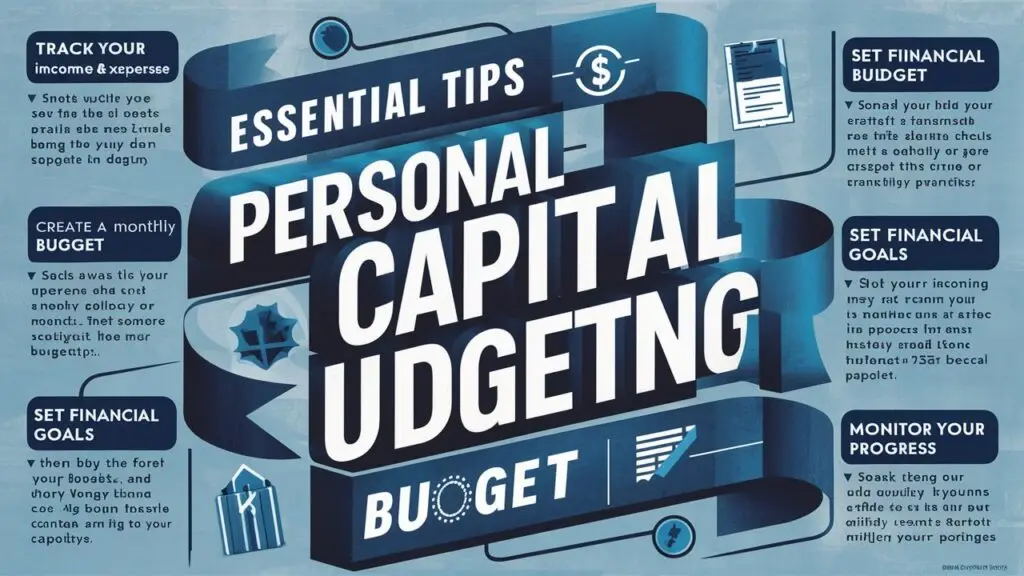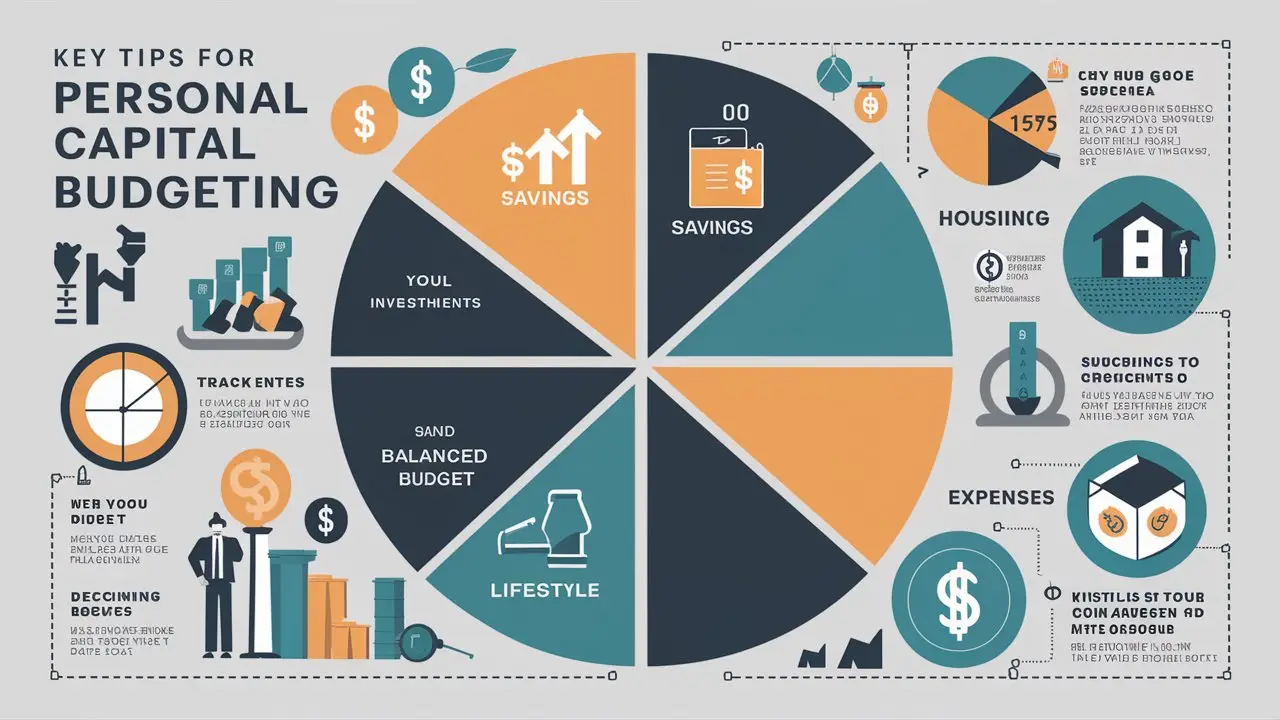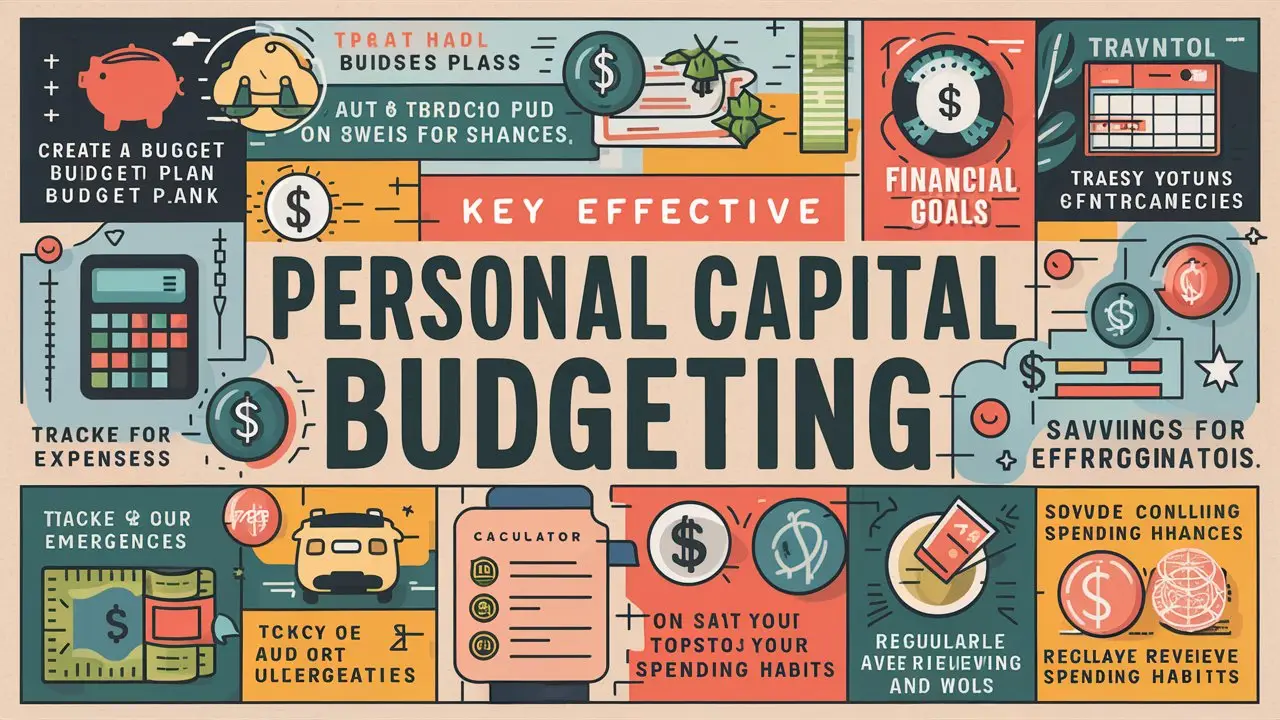
The Ultimate Guide to Personal Capital Budgeting Methods
Personal capital budgeting methods are an essential aspect of managing one’s finances. It involves planning, analyzing, and controlling income and expenses to ensure financial stability and achieve long-term financial goals. In this comprehensive guide, we will explore various personal capital budgeting methods, their importance, and practical tips for effective financial management.
Introduction
Effective budgeting is the cornerstone of financial success. It helps individuals track their spending, save for future goals, and avoid unnecessary debt. Personal capital budgeting methods, in particular, focuses on optimizing the use of personal resources to achieve financial stability and growth. This article delves into various methods of personal capital budgeting, providing insights and practical tips for anyone looking to take control of their financial future.
Understanding Personal Capital Budgeting
Personal capital budgeting methods are a process of planning and managing personal finances to maximize the use of available resources. It involves setting financial goals, estimating future income and expenses, and making informed decisions to achieve these goals. The primary objective is to ensure that personal finances are managed efficiently, allowing for savings, investments, and financial security.
The Importance of Personal Capital Budgeting Methods
Personal capital budgeting methods plays a crucial role in financial management for several reasons:
Financial Awareness : It provides a clear picture of your financial situation, helping you understand where your money is going and identify areas for improvement.
Goal Setting: It allows you to set realistic financial goals and create a roadmap to achieve them.
Debt Management: It helps in managing and reducing debt by prioritizing expenses and avoiding unnecessary borrowing.
Savings and Investments: It encourages regular savings and investments, ensuring financial growth and security.

Popular Personal Capital Budgeting Methods
There are several methods of personal capital budgeting, each with its own advantages and disadvantages. Here, we have listed some of the most popular ones:
Zero-Based Budgeting
Zero-based budgeting is a method where every dollar of income is assigned a specific purpose, resulting in a budget where income minus expenses equals zero. This approach ensures that no money is left unaccounted for, promoting disciplined spending and saving.
Advantages: Promotes mindful spending, ensures every dollar is utilized effectively.
Disadvantages: Time-consuming, requires detailed tracking and adjustments.
50/30/20 Budgeting Rule
The 50/30/20 rule is a simple and effective budgeting method where 50% of income is allocated to needs, 30% to wants, and 20% to savings and debt repayment. This method balances essential expenses with discretionary spending and savings.
Advantages: Easy to implement, promotes balanced financial management.
Disadvantages: May not be suitable for all income levels, lacks flexibility for unexpected expenses.
Envelope System
The envelope system involves distributing cash for different spending categories into physical envelopes. Once the cash in an envelope is spent, no more money can be spent in that category until the next budgeting period.
Advantages: Promotes discipline, limits overspending.
Disadvantages: Less convenient in a digital age, requires strict adherence.
Pay Yourself First
This method prioritizes saving by setting aside a predetermined amount of money for savings and investments before allocating funds for expenses. The idea is to treat savings as a non-negotiable expense.
Advantages: Ensures consistent savings, builds financial security.
Disadvantages: May require adjustments in spending habits, can be challenging for those with tight budgets.
Line-Item Budgeting
Line-item budgeting involves detailing every income and expense category, tracking all transactions, and adjusting the budget as needed. This method provides a comprehensive view of your financial situation.
Advantages: Highly detailed, allows for precise tracking and control.
Disadvantages: Time-consuming, requires regular updates.

Tips for Effective Personal Capital Budgeting
Implementing a personal capital budget requires discipline and consistency. Here are some tips to make the process more effective:
Set Clear Financial Goals: Define the short-term and long-term financial goals to guide your budgeting efforts.
Track Your Spending: Use budgeting tools or apps to track your expenses and income regularly.
Review and Adjust: Periodically review your budget to ensure it aligns with your financial goals and make necessary adjustments.
Stay Disciplined: Stick to your budget and avoid impulse spending to achieve financial stability.
Seek Professional Advice: Consider consulting a financial advisor for personalized budgeting strategies and investment advice.
FAQs about Personal Capital Budgeting Methods
- What is personal capital budgeting methods?
Personal capital budgeting methods are the process of planning and managing personal finances to optimize the use of available resources, achieve financial goals, and ensure financial stability. - How does zero-based budgeting work?
Zero-based budgeting involves assigning every dollar of income a specific purpose, resulting in a budget where income minus expenses equals zero. This method promotes disciplined spending and saving. - What is the 50/30/20 budgeting rule?
The 50/30/20 rule allocates 50% of income to needs, 30% to wants, and 20% to savings and debt repayment. It helps balance essential expenses, discretionary spending, and savings. - What are the benefits of the envelope system?
The envelope system promotes discipline and limits overspending by allocating cash for different spending categories into physical envelopes. Once the cash is spent, no more money can be used in that category until the next budgeting period. - Why should I pay myself first?
Paying yourself first prioritizes saving by setting aside a predetermined amount for savings and investments before allocating funds for expenses. This method ensures consistent savings and builds financial security. - How can line-item budgeting help me manage my finances?
Line-item budgeting provides a comprehensive view of your financial situation by detailing every income and expense category, tracking all transactions, and making necessary adjustments. It allows for precise tracking and control of your finances.
Conclusion
Personal capital budgeting methods are a vital aspect of financial management that helps individuals achieve their financial goals and secure their future. By understanding and implementing various budgeting methods, you can take control of your finances, reduce debt, and build a solid foundation for long-term financial success. Remember, the key to effective budgeting is consistency, discipline, and a clear understanding of your financial objectives. Start today and pave the way for a financially secure tomorrow. By following the tips and methods outlined in this article, you can master personal capital budgeting and achieve financial success. Happy budgeting!
For more information regarding Finance Basic you can visit FinancewithAi Channel & Home
Pingback: Mastering Budgeting Categories for Financial Stability
Pingback: Top 5 Budget Planners: The Key to Mastering Your Finances - FINANCE WITH AI
Pingback: The Retirement Savings Magic Number 101: Your Guide to Achieving Financial Goals - FINANCE WITH AI